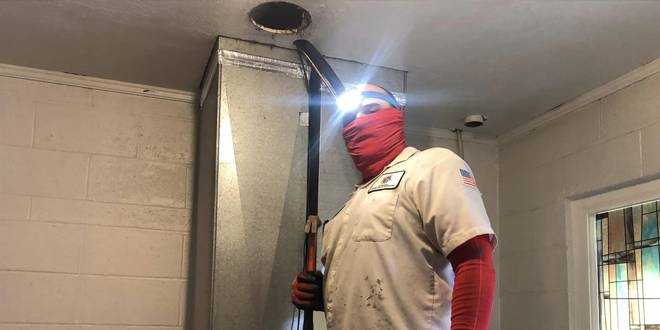
Living in Vacaville, CA, efficient HVAC ductwork is key to home comfort. Learn essential insights about maintaining and upgrading your system to ensure optimal airflow and energy efficiency. Discover how local expertise makes a difference in your HVAC investment.
What Is HVAC Ductwork?
HVAC ductwork is the system of tubes that channels heated or cooled air from your HVAC unit throughout your home. It’s a fundamental part of your heating, ventilation, and air conditioning system, ensuring that air is efficiently and evenly distributed to each room. In Vacaville, CA, where temperatures can vary, having a well-functioning forced air duct system is essential for maintaining a comfortable indoor environment year-round.
This air duct system performs several crucial functions:
- Air Distribution: Your ductwork is like the highway of comfort in your home. It transports the warm or cool air from your HVAC system to every corner, ensuring each room feels just right.
- Air Return: Think of return air ducts as the recycling path. They send the air back to your HVAC for a refresh, which is crucial for keeping the air you breathe clean and the temperature steady.
- Energy Efficiency: Well-designed and properly installed ductwork contributes significantly to the energy efficiency of your HVAC system. Air duct wear symptoms, like leaks, poor insulation, or suboptimal design, can lead to energy loss, higher utility bills, and uneven heating or cooling.
- Indoor Air Quality: The ductwork plays a role in determining indoor air quality. Regular maintenance is key to preventing dust and allergens from hitching a ride, ensuring the air in your home stays as pure as nature intended.
In a place like Vacaville, CA, where temperatures can vary greatly throughout the year, efficient ductwork is crucial. It not only ensures comfort but also impacts energy bills and overall air quality. That’s why understanding the role of ductwork and ensuring it is well-maintained is essential for any homeowner.
What Are The Three Types of HVAC Ductwork?
HVAC ductwork comes in various types, each suited to different needs and setups in your heating, ventilation, and air conditioning system. Knowing the differences between these types is crucial for making informed decisions about your home’s climate control. Let’s explore the three primary types of HVAC ductwork:
1. Flexible Duct
Description: Flexible HVAC ducts are typically made of a wire coil covered with a bendable, durable plastic and surrounded by insulation. This flexibility allows them to fit into spaces where rigid ducts can’t.
Advantages: They are easier and quicker to install than rigid ductwork and are ideal for tricky spaces. Their flexibility allows for a more customized setup.
Considerations: They can be more susceptible to tears and punctures, which could reduce efficiency. They need to be properly supported and installed to avoid sagging or bending sharply, which can restrict airflow.
2. Rigid Ductwork
There are several types of rigid ductwork, including sheet metal ducts, fiberglass-lined ducts, and fiberboard ducts.
- Sheet Metal Ducts: Often made of galvanized steel or aluminum, a sheet metal duct is strong and less likely to mold.
- Fiberglass Lined Ducts: These are commonly used in commercial applications for noise reduction but are less frequent in residential systems due to potential fiberglass particle release into the air stream.
- Fiberboard Ducts: Constructed of fiberglass strands bonded with resin and covered with a foil laminate for moisture protection, these are well-insulated and great for sound dampening.
Advantages: Rigid ductwork is generally more durable and less prone to tearing. It’s also better for long-term energy efficiency.
Considerations: It’s more challenging to install, often requiring more space and specialized fittings. The initial installation can be more costly than flexible ducts.
3. Semi-Rigid Ductwork
Description: This type of ductwork offers a middle ground between rigid and flexible ducts. It’s made from a somewhat bendable material, usually aluminum, that holds its shape once bent.
Advantages: It combines the durability of rigid ducts with some of the flexibility of soft ducts. It’s typically used in tight spaces where a bit of bending is necessary, but long-term solidity is desired.
Considerations: While semi-rigid ducts are versatile, they may not be suitable for all applications. They can be more expensive than flexible ductwork and may require professional installation for optimal performance.
Each type of ductwork has its specific applications, advantages, and considerations. The choice depends on factors like the layout of your home, your HVAC system’s requirements, and your specific needs for energy efficiency, noise control, and air quality.
HVAC Ductwork Design and Sizing
The design and sizing of HVAC ductwork are critical for ensuring efficient air distribution throughout your home. Properly sized ducts optimize airflow, maintain consistent temperatures, and enhance the overall performance of your HVAC system.
Key Considerations for Design: The main factors in ductwork design include the size of your home, the layout of rooms, and the capacity of your HVAC system. A well-designed duct system ensures that each room receives an adequate supply of air, balanced with the system’s ability to produce and distribute that air.
Sizing Methodology: The sizing of ductwork is typically done using the Manual D duct design methodology. This approach considers various factors like the cubic feet per minute (CFM) of air required in each room, friction loss in the ducts, and the velocity of air through the ducts. The goal is to create a system that delivers the right amount of air with minimal energy loss.
HVAC Ductwork Cost and Installation Factors
The cost of air duct installations varies based on several factors. These include the type of ductwork, the complexity of your home’s layout, the materials used, and labor costs.
Material Costs: Different materials come with varying price tags. For example, flexible ducts are generally less expensive than rigid metal ducts, but they might not be suitable for all situations.
Labor and Installation Complexity: The cost of installation can vary significantly depending on the complexity of your home’s structure. Homes with easy attic access or open basements may incur lower installation costs compared to those with complex layouts or hard-to-reach areas.
Additional Factors: Other cost factors include the need for custom fittings, the length of ductwork required, and any additional insulation or sealing needed to optimize efficiency.
Frequently Asked Questions About HVAC Ductwork Replacement
1. What is the best type of ductwork for HVAC?
The “best” type of ductwork depends on your specific needs, including your home’s layout, budget, and HVAC system requirements. Rigid ducts (like sheet metal) are durable and less prone to leaks, ideal for long-term efficiency. Flexible ducts are easier to install in complex or tight spaces. Consult with an HVAC professional to determine the most suitable type for your home.
2. What are the disadvantages of flex ducts?
Flexible ducts are favored for their ease of installation and versatility, but they come with certain limitations. For example:
- Susceptibility to tears and punctures, potentially leading to air leaks.
- They can be less durable over time.
- They may sag or kink, which can restrict airflow and reduce system efficiency.
- Dust and debris accumulation can be higher if not properly maintained.
3. Are flex ducts expensive?
Flexible ducts are generally less expensive than rigid ductwork in terms of material costs. However, the total investment should account for the unique requirements of your HVAC system and the complexity of the installation process. In some cases, the need for specialized fittings or additional labor for a challenging installation can offset the initial lower cost of the materials.
4. How do I choose HVAC ductwork?
To choose the right ductwork:
- Home Layout Analysis: Homes with tight spaces, numerous corners, or unique architectural features often benefit from the adaptability of flexible ducts.
- HVAC System Requirements: Consider the capacity and design of your HVAC system. Some systems may require the robustness of rigid ducts, while others operate efficiently with flexible ductwork.
- Durability and Maintenance: Evaluate the longevity and upkeep requirements of each duct type. Rigid ducts typically offer greater durability but may require more intensive installation, while flexible ducts need more regular maintenance checks.
- Professional Consultation: An HVAC expert can provide tailored recommendations that align with your local climate conditions and adherence to building codes, ensuring a system that performs optimally in your specific environment.
5. What are the four rules for flexible ducts?
Proper installation of flexible ducts is essential for maintaining system efficiency and longevity. Remember these key guidelines:
- Avoid Sharp Bends: Ensure that the ducts are laid out in smooth curves to prevent airflow restrictions.
- Adequate Support: Regularly spaced supports prevent sagging, which can lead to reduced airflow and efficiency.
- Seal Joints Securely: Proper sealing of all connections is vital to prevent air leaks, ensuring maximum system efficiency and performance.
- Appropriate Insulation: Insulating ducts in unconditioned spaces like attics or crawl spaces is crucial for maintaining energy efficiency and preventing condensation.
6. What size of ductwork do I need for my house?
Ductwork size depends on several factors, including the size of your home, the layout, and the capacity of your HVAC system. An HVAC professional can calculate the correct duct size using Manual D duct design methodology, ensuring optimal airflow and system efficiency.
7. How hard is it to replace ductwork?
The difficulty of replacing ductwork varies widely based on several elements:
- Accessibility: The ease of accessing existing ductwork, influenced by its location in attics, walls, or crawl spaces, can significantly impact the complexity of the project.
- Duct Type: The type of ducts being installed or replaced (flexible vs. rigid) requires different skill sets and installation techniques.
- Home Layout: Complex architectural designs or multi-story homes can add layers of difficulty to the replacement process.
- Code Compliance: Understanding and adhering to local building codes and HVAC standards is essential for a successful replacement.
Due to these factors, replacing ductwork often necessitates a blend of technical knowledge, practical skill, and familiarity with local regulations, leading many homeowners to opt for professional installation.
8. Does replacing ductwork increase your home’s value?
Replacing old or inefficient ductwork can increase your home’s value by improving energy efficiency, air quality, and overall comfort. While it may not directly increase the home’s market value like a kitchen remodel, it makes the home more attractive to potential buyers who value efficiency and comfort.
Ready for Optimal Comfort? 🌟🏠
Elevate your home’s HVAC efficiency today with All Weather Heating & Air Conditioning. Our expert team is here to guide you through selecting and installing the perfect ductwork. Discover the unique benefits of our customized solutions and exceptional service. Contact us now to ensure your home’s comfort and efficiency for years to come!

